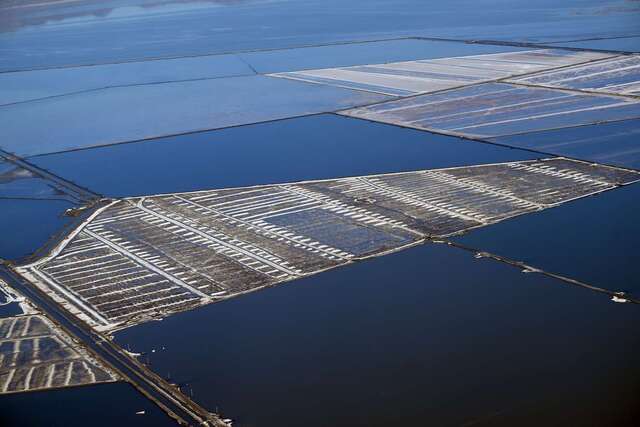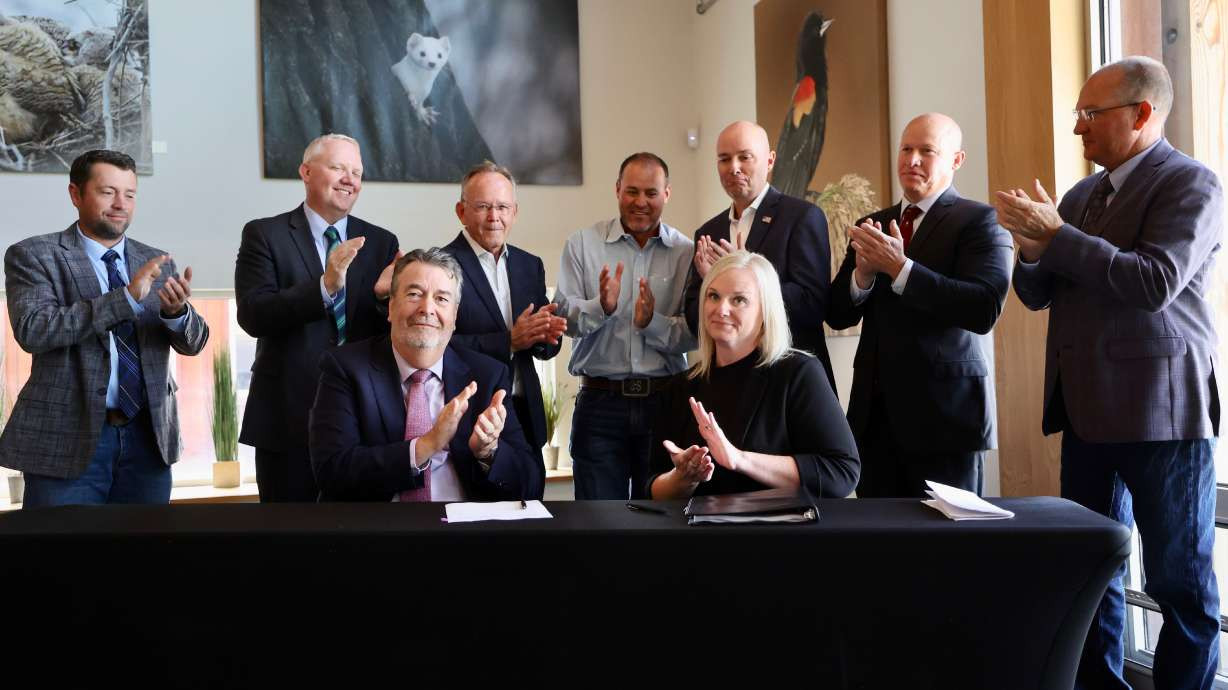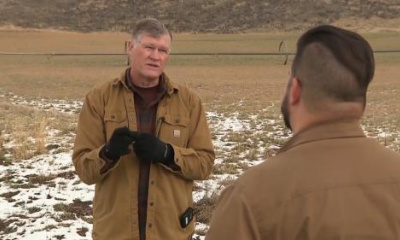FARMINGTON — The Great Salt Lake is slated to receive a major boost from one of the key industries that rely on it for business.
Utah land managers announced Tuesday that they have finalized a voluntary agreement with Compass Minerals on a deal that will permanently direct over 200,000 acre-feet of water to the Great Salt Lake every year. Utah leaders say it's a historic first following a bill passed earlier this year that tightened regulations on mineral extraction to better manage the industry's water consumption.
"This agreement is an example of the good we can accomplish when public and private come together to be a part of the solution," said Utah Gov. Spencer Cox, in a statement. "We look forward to the lasting benefit this will make toward the health and sustainability of the lake for generations to come."
Compass Minerals is one of a handful of companies that collect minerals from the Great Salt Lake's mineral-heavy brine. It has collected salt, sulfate of potash and magnesium chloride from the lake for over 50 years.
Mineral extraction companies typically evaporate the lake's water to extract minerals, which accounts for about 8% of the lake's water consumption. Lawmakers passed HB453 earlier this year, which directs the Utah Division of Water Rights to create a water distribution plan for the lake and a severance tax for lake minerals.
Compass Minerals agreed to a term sheet with Utah shortly after the bill passed, which included a plan for voluntary water reduction among other things. Under the agreement, Compass Minerals can withdraw up to its full water right when the lake levels are high, but it agreed to go below its right when levels are low — even suspending operations if the lake falls to near its all-time low set in 2022.
"The Great Salt Lake is a vital ecosystem and economic engine that we must all work to protect," said Edward Dowling Jr., the company's president and CEO. "We commit to significant contributions toward lake health, while also ensuring future predictability in our water use allotment that supports sustainable production at our Ogden facility."
It's a "major milestone" in efforts to address the state's water challenges, added Senate President Stuart Adams before a celebratory event near Farmington Bay on Tuesday morning.
However, Utah still has a long way to go when it comes to fixing issues tied to the Great Salt Lake. The lake has rebounded some from its record low, but it remains below the state's target goal of 4,198 feet elevation, which is considered the lake's lowest healthy level.
The lake's southern arm surpassed 4,195 feet elevation for the first time since 2019 after this year's spring snowmelt, but it has since fallen back to 4,192.9 feet elevation after a mostly hot and dry summer. Its northern arm is listed at 4,191.9 feet elevation, which means the lake is still nearly 5 to 6 feet below its minimum healthy level.

A view of mineral drying ponds within the Great Salt Lake on April 9. Utah land managers announced Tuesday that they've finalized a deal with Compass Minerals that will send 200,000 acre-feet to the Great Salt Lake every year. (Photo: Scott G Winterton, Deseret News)
Compass Mineral's annual donation is enough to make a sizable dent in the long-term efforts to get water to the Great Salt Lake. The lake needs about 471,000 to 1.055 million additional acre-feet of water to go toward the lake annually so that it can rise to that 4,198-foot elevation goal by the 2050s, according to the Great Salt Lake Strategic Plan that the Office of the Great Salt Lake Commissioner released in January.
Other large donations would be needed to reach that pivotal mark within the next five to 20 years, which would require at least 531,000 to nearly 1.2 million acre-feet of additional water annually and could require as much as 1.2 million to over 1.7 million acre-feet of additional water every year, depending on drought conditions.
Those types of donations are a work in progress, says Brian Steed, Utah's Great Salt Lake commissioner. He said the office is working with water users across the state to find ways to get water to the lake.
"We recognize restoring the lake to healthier levels will take years and we appreciate the action Compass Minerals is taking today to help protect the lake," he said. "Together, we can make a difference."








